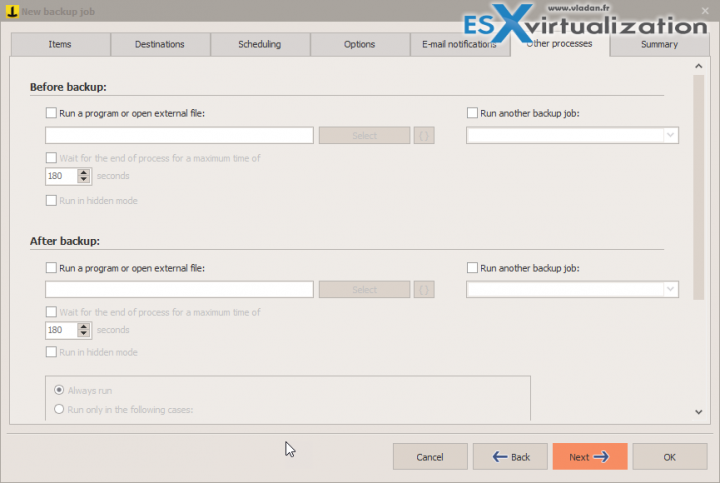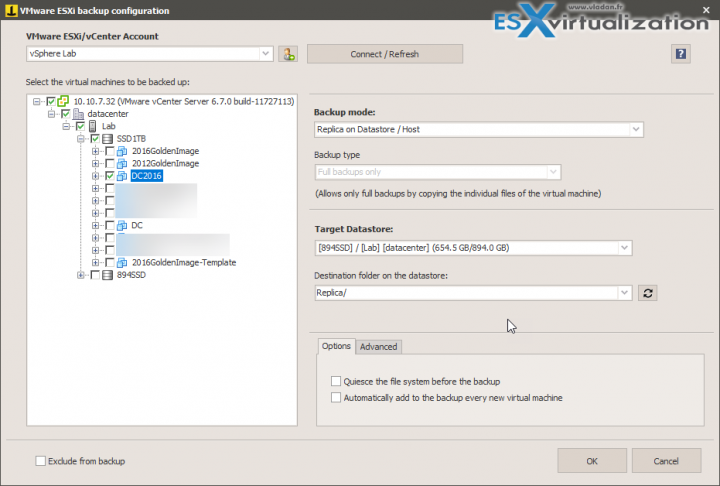
#Iperius backup how to copy backup to a another vmware host full
At first, the initial full backup data needs to be restored, then followed by the incremental backup data.

There was a concern in the past in terms of restoring a backup resulted from incremental backups. On the other hand, incremental backup performed during the weekdays to catch the changes made on the VM after the last successful full backup. It makes sense to do the full back up only on the weekend as, usually, it requires more time and network bandwidth. For example, the full backup can be done on the VM only on the weekend while the incremental backup can be done every day during weekdays. The common best practice in VM environment is to do incremental backup more often than the full backup. One of the strategies to avoid this is by implementing incremental backup. However, in the contrary to all the facts mentioned above, backup data could consume lots of disk space if the administrator doesn’t plan it correctly, and ended up with high investment on storage infrastructure. Technology like deduplication, snapshot, and replication also helps in making the backup process more efficient. This also adds more flexibility to the process as the administrator can easily restore a VM by simply mounting the virtual disk to a host data store. The option to perform backup at the virtualization layer is easily preferred because it reduces the service disruption caused by the backup process that usually eats up a lot of resources on the OS. We all know that in this virtualization era, administrators are given the option to do the backup at the virtualization layer rather than the traditional backup at the OS level. The importance of incremental backup for VMs And because of the smaller size, it gives less burden to the network.

Incremental backup is also processed faster, as the size of the backup data is smaller. With this way, we can save disk space used to store the backup. Moreover, we already have the “X-Y-Z” part backed up previously, so we don’t need that part to be backed up again. Obviously, copying only the “W” part of the data will consume less disk space compared to copying the whole “W-X-Y-Z” data. But if we perform an incremental backup instead, it will only copy the “W” part of the data. If we then perform another full backup, it will copy the whole data “W-X-Y-Z”.

Today, the data is modified so now we have four letters “W-X-Y-Z”. To help better understanding on how each type of backup works, see this example:įor example, a data contains three letters “X-Y-Z” was fully backed up yesterday. It works differently with the typical full backup, where the whole data parts were copied. Incremental backup is a type of backup that only copies part of the data that are changed since the successful backup. Of course, popular virtualization platforms like VMware vSphere or Microsoft Hyper-V has been made to support incremental backup. It is important to have an incremental backup on Virtual Machines (VMs) to ensure continuous backup while still maintaining efficiency in the process. A good backup strategy should include an incremental backup in its plan. It has to be done to ensure that the IT system can always be recovered from a failure or disaster condition, and also to ensure that users will not lose their important data and access to services. Backup has always been one of the must-have IT capabilities, especially in enterprise network.


 0 kommentar(er)
0 kommentar(er)
